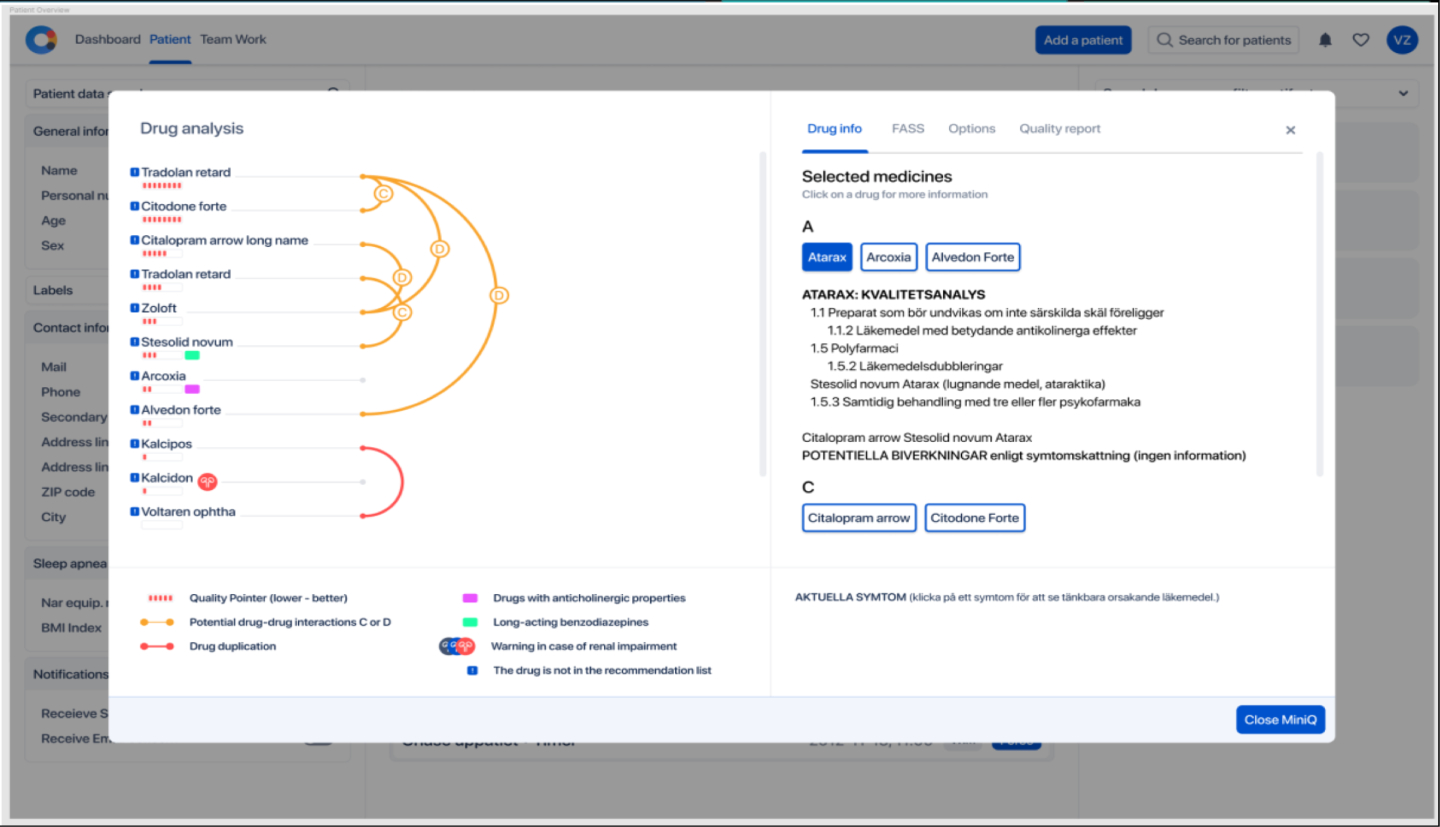Every doctor
Every consultation
Every drug prescribed…
…brings the potential for costly ADRs.
Costly to your patients’ health
Costly to your organisation’s budgets
Globally, preventable medication errors cost over $1 trillion each year.
Adverse Drug Reactions (ADRs) are among the leading causes of additional complications and longer hospital stays, morbidity and mortality.
It has been estimated that ADRs are the 4th largest cause for mortality in the USA, resulting in the deaths of several thousands of patients each year.
Click here to read more about the devastating effects of ADRs both to patients and to healthcare providers>>
Click here to contact us now by email
Quantum Satis
Turning the tide on ADRs
The power of QS AI
Quantum Satis is a powerful AI-based medical evaluation tool which supports decision-making at doctor/patient consultations. It reveals potential drug combination issues regardless of the complexity of the proposed or existing drug regime of that patient. It can reveal drug specific indicators (such as inappropriate drugs, drug duplication, drug-drug interactions etc) and diagnosis specific indicators (drug-disease interactions, contraindications etc).
It can quickly identify, collate and present its analysis in a clear and intuitive format. It interrogates the relevant drug combination data from across the multiple datasets available to your organisation, including individual patient history, physiology and symptoms.
Real-time, multi-dataset analysis
Quantum Satis can be used to assess proposed drug therapies to finesse a course of treatment and to highlight the potential for hidden conflicts inherent in that proposal. Or it can be used to review a patient’s existing drug constellation to rule in/out the potential for ADRs being a cause of underlying health issues.
Quantum Satis can do all this in real time at the point of delivery.
Organisation -wide benefits
At an individual doctor/patient consultation, Quantum Satis can make a hugely positive influence on the health outcomes of individuals in your organisation’s care, and sometimes a life-saving difference.
But multiply the effects of a QS review across every consultation within your organisation, and the incremental reduction of hidden or unexpected drug conflicts becomes truly ground-breaking, making your organisation a leader in turning the tide against ADRs, and saving lives and money.

Quantum Satis
Deployable power across your entire organisation, however large.
Beyond one-to-one consultations
Quantum Satis is more than just a prescription tool. Alongside it’s decision support capabilities, it combines functionality for both data capture and statistics/reports for management and research purposes, bringing truly innovative data-led improvements to your organisation.
With modules for physicians, nurses, patients and pharmacists/clinical pharmacologists, Quantum Satis traverses healthcare and brings decision support to all your organisation’s frontline healthcare professionals.
Easy deployment and scalablity
The web-based nature of Quantum Satis makes it easy to scale up to more users and to launch updates. Furthermore, it can be readily integrated into existing care platforms.
Please contact me
The massive Adverse Drug Reaction problem encountered globally by healthcare organisations
Annual rise in hospital admissions due to ADRs
%
United Kingdom
%
France
%
Norway
Globally, preventable medication errors cost over $1 trillion each year, of which the U.S. economy alone incurs $21 billion.
Adverse Drug Reactions (ADRs) are among the leading causes of additional complications and longer hospital stays, morbidity and mortality.
It has been estimated that ADRs are the 4th largest cause for mortality in the USA, resulting in the deaths of several thousands of patients each year. National USA Vital Statistics System data showed that from 1999 to 2006, the rate of ADR-related deaths increased from 0.08 to 0.12 per 100,000 persons.
It is estimated that up to 70% of ADRs leading to emergency department visits are preventable, with some countries spending up to 15-20% of their healthcare budgets treating otherwise avoidable ADRs.
The strain that ADRs place on the health care system is significant yet preventable.
